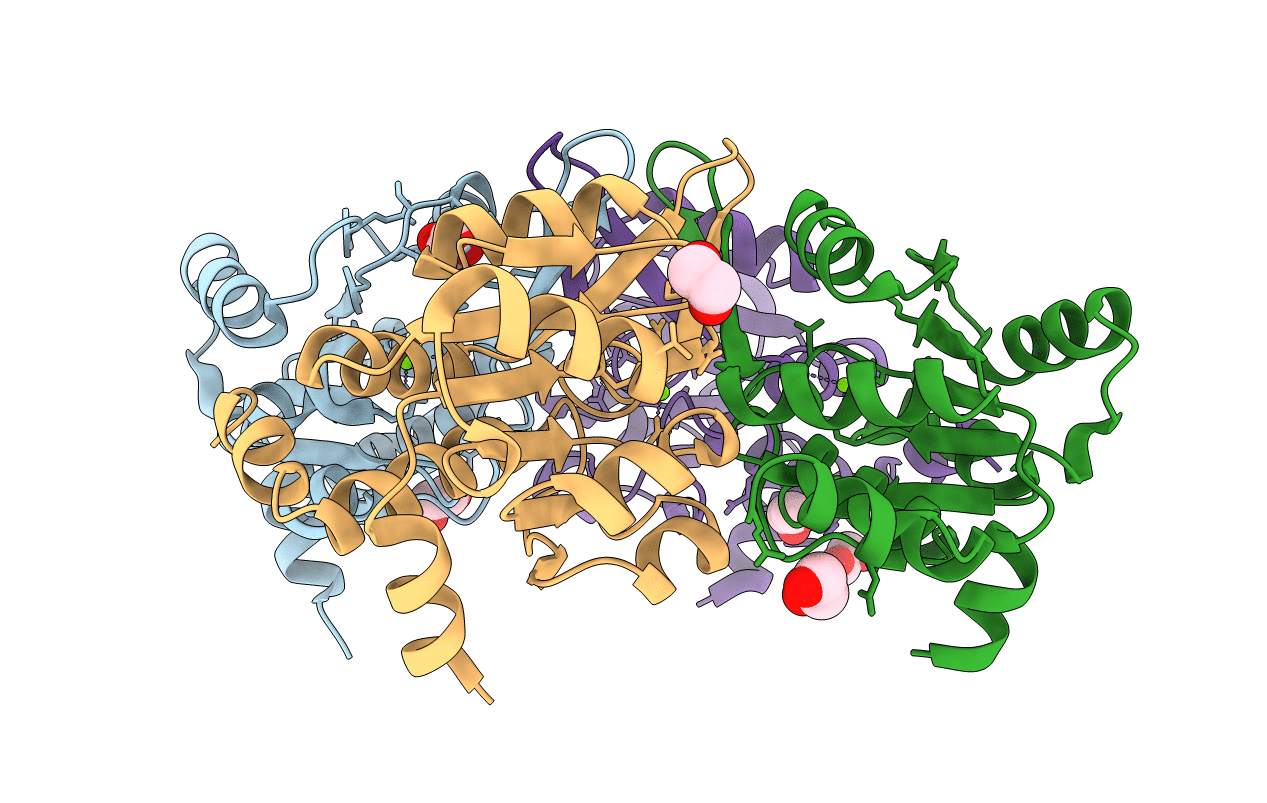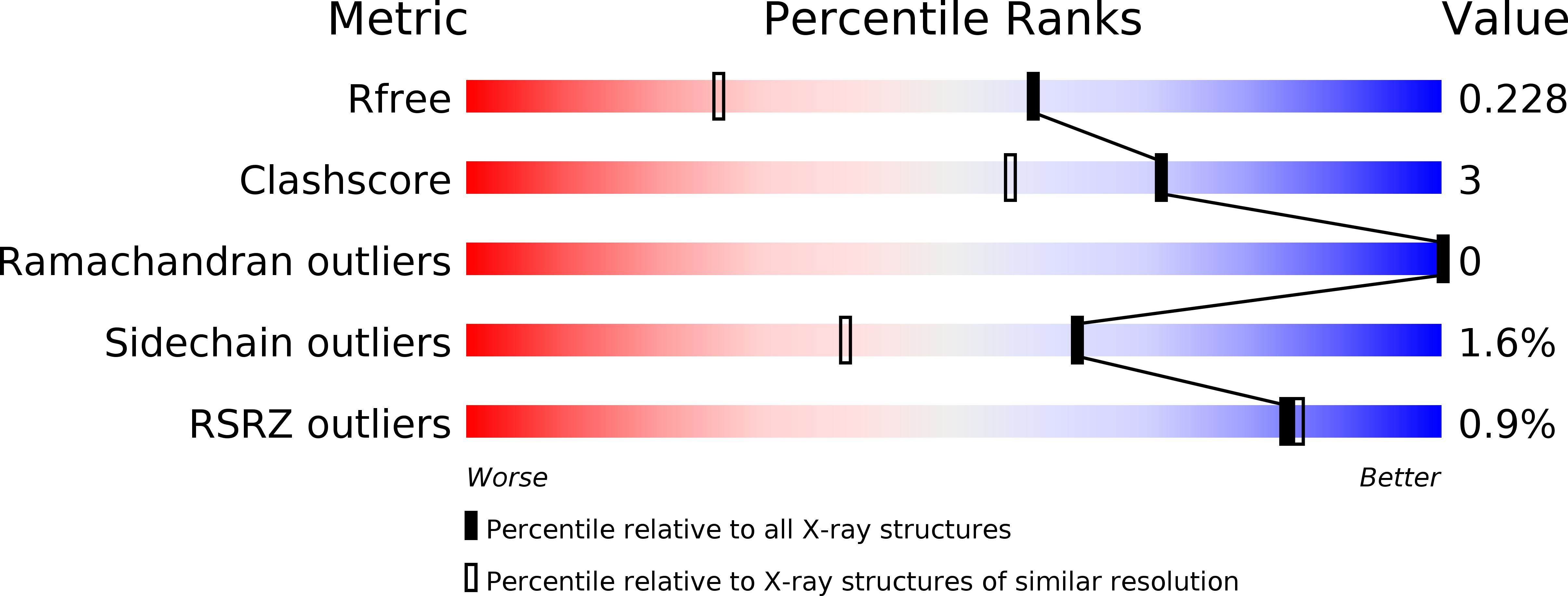
Deposition Date
2014-05-15
Release Date
2015-02-11
Last Version Date
2024-01-10
Entry Detail
PDB ID:
4UM7
Keywords:
Title:
Crystal structure of 3-deoxy-D-manno-octulosonate 8-phosphate phosphatase (kdsC) from Moraxella catarrhalis in complex with Magnesium ion
Biological Source:
Source Organism:
MORAXELLA CATARRHALIS BC8 (Taxon ID: 857574)
Host Organism:
Method Details:
Experimental Method:
Resolution:
1.64 Å
R-Value Free:
0.22
R-Value Work:
0.19
R-Value Observed:
0.19
Space Group:
P 1 21 1


